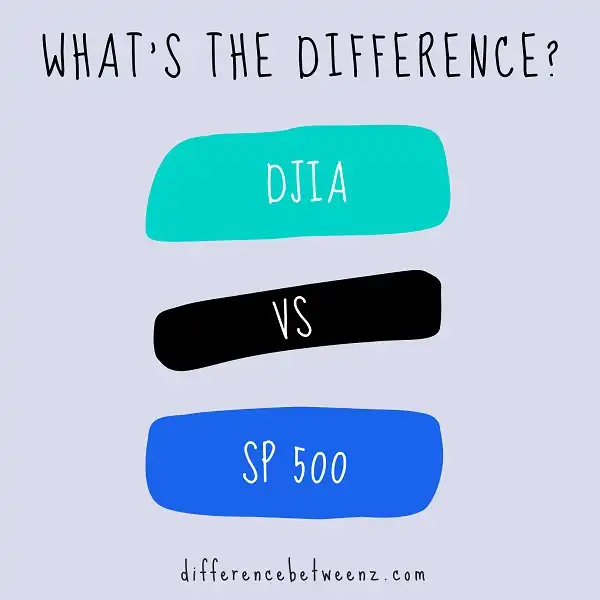If you’re looking to invest in the stock market, it’s important to understand the difference between the Dow Jones Industrial Average (DJIA) and the Standard & Poor’s 500 Index (SP500). While both indexes track stocks, they have different compositions, which can impact how they perform. Here’s a breakdown of what you need to know.
What is DJIA?
DJIA is an acronym for Dow Jones Industrial Average. DJIA is a stock market index that shows how 30 major stocks traded on the New York Stock Exchange are doing. DJIA is one of the oldest and most commonly used market indices in the world. It was first published in 1896, and it is now managed by S&P Dow Jones Indices. DJIA is often used as a barometer for the health of the US economy, as it includes stocks from various sectors such as finance, manufacturing, energy, and healthcare. DJIA is also followed closely by investors and traders around the world, as it can provide insights into how the US stock market is performing.
What is SP 500?
SP 500 is an index that tracks the 500 largest publicly-traded companies in the United States by market capitalization. Because it is a broad index, the SP 500 is often used as a benchmark for the overall stock market. The SP 500 is well-diversified, with companies from a variety of sectors represented, including healthcare, technology, finance, and consumer goods. The index is published by Standard & Poor’s, a division of McGraw-Hill.
Difference between DJIA and SP 500
DJIA and SP 500 are two of the most commonly used stock market indices in the world. Both measure the performance of a basket of large, publicly traded companies, but there are some key differences between the two. DJIA is a price-weighted index, meaning that it gives more weight to companies with higher stock prices. SP 500, on the other hand, is a market-capitalization-weighted index, meaning that it takes into account not only the stock price but also the total number of shares outstanding. As a result, DJIA is often seen as a better indicator of short-term performance, while SP 500 is considered to be a more accurate measure of long-term trends.
Conclusion
The Dow Jones Industrial Average (DJIA) is a price-weighted average of 30 significant stocks traded on the New York Stock Exchange and the NASDAQ. The Standard & Poor’s 500 (S&P 500), sometimes called “The Index,” is an unmanaged index of 500 stocks chosen for market size, liquidity, and industry group representation. It is not possible to invest directly in an index. So what does this mean for investors? In short, DJIA stocks are more expensive than S&P 500 stocks. This makes sense when you consider that DJIA companies are some of the most well-known and established businesses in the world.


